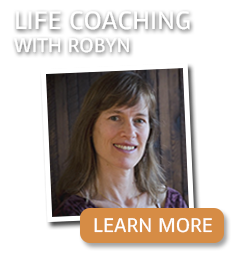Contemplation on Anger
 For most of my life, and especially my life as a yoga teacher, I did not identify with anger; I didn’t think I ever got angry. And as a yoga teacher on a spiritual path, I didn’t think I should get angry. Instead, I would claim to be “frustrated,” or “upset.” After I started studying with Kathlyn Hendricks, I learned that we all get angry and that frustration is simply a more acceptable way of talking about anger, but also a way of denying it’s true force. Now I have become friendly with my anger. I accept it as a normal part of being human and don’t pretend to rise above it, though I have learned to work with it’s powerful energy.
For most of my life, and especially my life as a yoga teacher, I did not identify with anger; I didn’t think I ever got angry. And as a yoga teacher on a spiritual path, I didn’t think I should get angry. Instead, I would claim to be “frustrated,” or “upset.” After I started studying with Kathlyn Hendricks, I learned that we all get angry and that frustration is simply a more acceptable way of talking about anger, but also a way of denying it’s true force. Now I have become friendly with my anger. I accept it as a normal part of being human and don’t pretend to rise above it, though I have learned to work with it’s powerful energy.
Anger arises naturally in all of us, as it does in all of the animal kingdom. We can’t control it because it happens in our bodies just slightly before our minds get an inkling of it. Body signals for anger might be: tension in the neck, jaw, shoulder blades, headaches, or clenching hands.
Here are the main reasons we get angry:
1 – we perceive we’ve been violated
2 – we perceive an injustice/lack of fairness
3 – we perceive a trespass to our property, body or space
3 – we do not feel in control and we want to be
Examples might be: someone cutting in front of you on the highway; someone stealing your purse; someone saying something untrue to you; someone defaming you; someone breaking an agreement with you, you breaking your own agreements with yourself. In these situations, we may feel angry and scared at the same time.
Recently, I’ve been getting to face my own anger right at the Community Yoga Center. Another yoga teacher has been removing our Inner Freedom Yoga fliers from the front door, bulletin boards and plastic holders, and hiding or removing my personal property and I don’t know why. I replace them and they get removed again even though there’s a written policy from the manager. I perceive all this as a violation and an injustice and I realize I have no control of what she does; all great reasons to get angry. And I do feel angry. I feel it rising up in my body like a flame and my jaw tenses. “What the heck? She has no right to do this!” GROWL… And this is not how I want to feel when I arrive at the yoga center to teach a class or see a client.
Sometimes I ruminate about it at night or lose sleep over it. Sometimes I vent my anger to others or think of nasty ways of getting back at her (which I wouldn’t ever do). I do not want to fight fire with fire. Even though anger arises without our control, we still get to decide how we direct it and how much energy we give it. And I do not want to keep feeding the demons of anger because it does not solve any problems, nor does it feel good in my body. Even thinking about the situation can spark a shot of adrenaline that aggravates my system. I’ve also learned that trying to resist or stop the flow of anger also creates problems. It can create a pressure cooker of energy that wreaks havoc on our bodies if it’s not allowed to release. Or, we can end up unconsciously spewing it out all over (even to those not involved) when we don’t allow it to have a direct outlet.
So when I feel that adrenaline surge, first I pause to really let myself feel it’s powerful flow in my being. I say hello to the energy. And then I may wiggle or move in some way to help the adrenaline shift. (If the anger feels really big and I’m alone, I may growl or do an angry dance to let off more steam. It’s a great way to shift anger’s energy). And I recognize, “Oh, I’m angry!” which I may say out loud. Then I may think: “Is there something concrete I can do about this situation?” And if there is, I do it. (Today, we asked the new manager for a meeting). Or, I may consider, “What can I learn from this? Is there something I’ve done to create this?” And I look for any ways that I’ve been out of alignment and do my best to make amends. Or, I may ask: “Am I making this bigger than it is? Can I let this go?” Several times in this yoga situation, I have let go and surrendered that I’m not in control. Or, if my thinking becomes obsessive, I may remember: “If I wasn’t putting so much energy here, where else would I like to be putting it? And I turn my attention toward things I can do something about, or want to create.
This great Native American Tale offers similar wisdom: An old Cherokee is teaching his grandson about life. “A fight is going on inside me,” he said to the boy.
“It is a terrible fight and it is between two wolves. One is evil – he is anger, envy, sorrow, regret, greed, arrogance, self-pity, guilt, resentment, inferiority, lies, false pride, superiority, and ego.” He continued, “The other is good – he is joy, peace, love, hope, serenity, humility, kindness, benevolence, empathy, generosity, truth, compassion, and faith. The same fight is going on inside you – and inside every other person, too.”
The grandson thought about it for a minute and then asked his grandfather, “Which wolf will win?”
The old Cherokee simply replied, “The one you feed.”
May we see our anger as a teacher, welcome it to the table, let it have a voice, and decide how much we’d like to feed it.
Namasté,
Robyn








